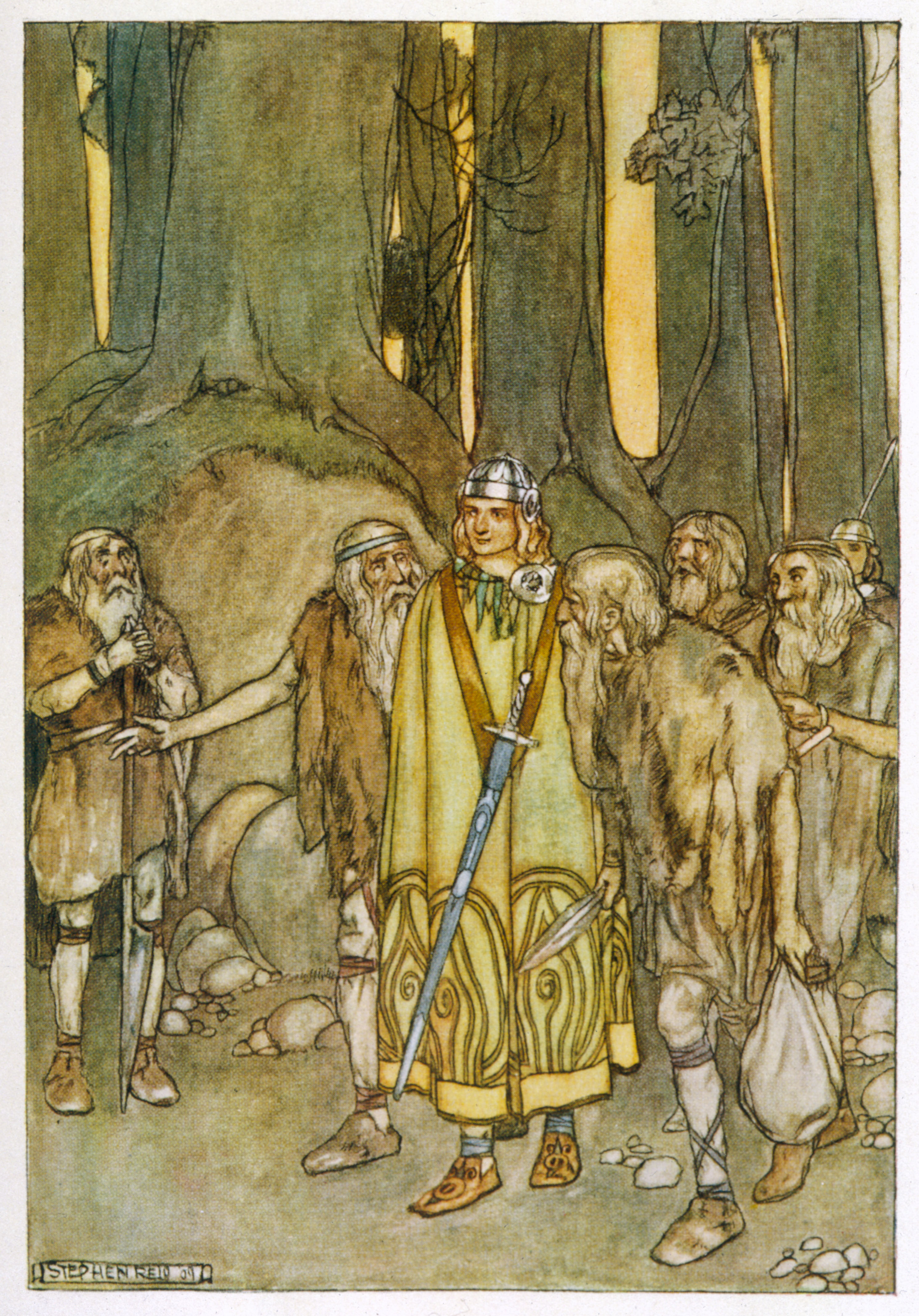Finn MacCool, << FIHN muh KOOL >>, was the leader of the Fianna, an Irish band of warriors who appear in the Fionn cycle, also known as the Fenian cycle, of ancient Irish tales. His name is also spelled MacCumhal or Mac Cumhaill. The tales are set in the province of Leinster about A.D. 200. Finn is also a familiar figure in Irish folk tales, sometimes portrayed as a giant. Several tales tell how Finn burned his thumb while cooking the salmon of knowledge. He put his thumb in his mouth to ease the pain. From that day, he had only to put his thumb in his mouth when he was perplexed to discover the solution to a problem.

Fionn tales focus not only on Finn but also on his son Oisin and his grandson Oscar. Finn and Oisin appear as Fingal and Ossian in the Ossianic poems published by the Scottish poet James Macpherson from 1760 to 1765. Macpherson claimed he had translated the poems from originals written by Ossian, but Macpherson was revealed as the actual author of at least some of them. Finn and Oisin also appear in the work of writers of the Irish Literary Renaissance of the late 1800’s, notably in the poem The Wanderings of Oisin (1889) by William Butler Yeats. Finn as a giant is also the model for the character of Finn in James Joyce’s experimental novel Finnegans Wake (1939).
See also Giant’s Causeway; Irish literature (Heroic tales, romances, and sagas); Mythology (The Fionn cycle).
